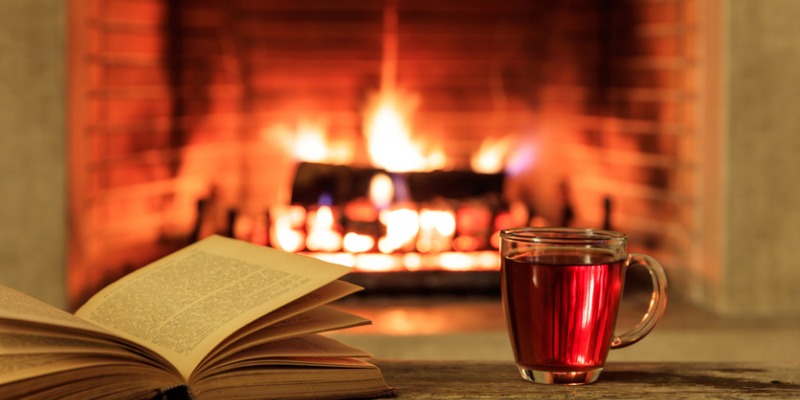As the weather finally starts to cool off, your air conditioner will get a much-needed break. Instead of blasting cool air around the house, it’s time to start snuggling up next to a warm fireplace. While this is cozy and more cost-effective than turning up the heater, using the fireplace requires precaution.
The Chimney Safety Institute of America (CSIA) estimated that in 2014 alone there were 22,500 residential fires caused by the fireplace or chimney. It’s by far the biggest cause of house fires related to heating equipment. FEMA also notes that heating equipment is the second-largest source of house fires only behind cooking equipment.
Whether your fireplace is wood-burning, gas-powered, or electric, safety is always the top priority. Here are the steps you need to take to insure your fireplace is safe to use before winter rolls in.
General Fireplace Safety Tips
No matter what type of fireplace you have, these general best practices can ensure safe operation. These are safety guidelines that should always be followed no matter what.
- Never put anything within a few feet of the fireplace hearth. Anything combustible should be outside of this clearance zone.
- Fires should be used for short-term heating that lasts no more than five hours.
- Have your fireplace and chimney professionally inspected at least once a year in the fall before you start using it.
- Make sure the flue is fully operational before each use. It should be open before starting the fire and closed once it’s completely extinguished.
- Never burn anything other than wood in a fireplace. Burning some objects could cause toxic smoke and some items burn very intensely, which increases the likelihood of a fire.
- At a minimum, a screen curtain should be used in front of the fireplace anytime there’s a fire, but installing heat-resistant glass doors is the safest option.
- Soot and creosote (a dark byproduct of burning wood that can accumulate in the chimney) should be cleaned out regularly since both are flammable.
Tips for Gas-Powered Fireplaces
If your natural gas bill goes up in winter it could be from frequent fireplace use. Gas-powered fireplaces are easier to use, but they still pose a fire risk and can be a source of carbon monoxide. This colorless, odorless gas can be deadly. Take the extra safety measures below if you have a gas-powered fireplace.
- Always have the flue and vents open during use.
- Make sure that the flue and all vents operate properly.
- Install a carbon monoxide detector in your home if you haven’t already.
Tips for Wood-Burning Fireplaces
Because of the combustible materials involved and the process of building the fire, wood-burning fireplaces can pose risks that aren’t a concern with gas and electric options. The tips below will help you mitigate those risks.
- Avoid using freshly-cut or moist wood. It will be more difficult to get a fire going, but once you do it will produce a lot of smoke that can cause deposits in the chimney.
- Always open the flue fully for the entire duration of the fire to prevent carbon monoxide poisoning.
- Once the fire is out, the hot ashes should be put in a metal container if you plan to remove them. If you don’t plan to remove them keep in mind coals can be hot enough to ignite a fire up to three days later.
- Fires should never be started indoors using lighter fluid, gasoline, or kerosene. Only use organic materials like newspaper and pinecones.
- Never use a vacuum to clean out the ashes as they could still be smoldering.
Tips for Electric Fireplaces
Electric fireplaces come in all shapes and sizes, and they can be located anywhere in the home. While there aren’t the same safety concerns as gas-powered and wood-burning fireplaces, the following precautions should be taken when using an electric fireplace.
- Don’t plug an electric fireplace into an extension cord. Even if it’s designed to plug into heavy-duty, grounded cords it’s not recommended.
- Don’t place an electric fireplace near a water source.
- Always plug an electric fireplace into a socket that can handle the voltage or it could start a real fire.
- Never use an electric fireplace if the cord or any of the components are damaged.
Verde Energy wants to make sure you stay warm and cozy this winter without increasing your carbon footprint. Get guilt-free heat with one of our green energy plans



